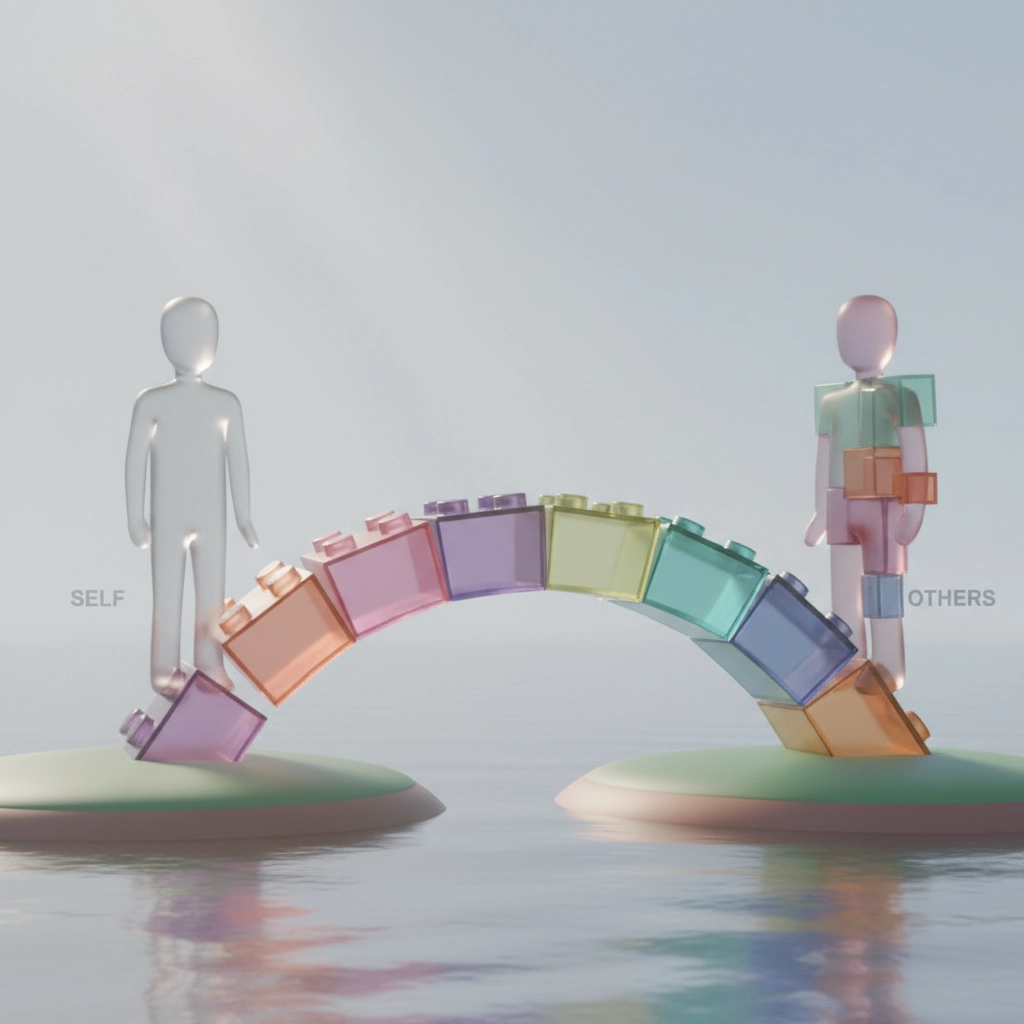Tough Love, Honest Boundaries: Using Creativity to Grow Without Being a Jerk
- Traci Shoblom

- Oct 21
- 5 min read
Let's be honest: tough love feels impossible sometimes. You know someone needs to hear the truth, but saying it feels like you're about to become the villain in their story. You know you need boundaries, but setting them feels selfish. Here's what we've learned: the problem isn't tough love itself, it's how we approach it.
Creativity changes everything. When we get creative about boundaries and honest conversations, we stop being jerks and start being genuinely helpful. We find ways to care deeply while protecting our own well-being. Most importantly, we learn the difference between honesty that helps and "honesty" that hurts.
The Real Deal About Tough Love
Tough love isn't about being harsh. It's about being clear. When you love someone enough to tell them what they need to hear instead of what they want to hear, that's tough love. When you respect yourself enough to say "no" to something that drains you, that's tough love too.
But here's where people get it wrong: tough love requires actual love. If you're frustrated, angry, or trying to control someone, that's not tough love, that's just being tough. Real tough love comes from a place of genuine care, both for the other person and for yourself.

The creative part? Finding ways to deliver truth that actually land. Finding ways to set boundaries that protect everyone involved. Finding ways to grow together instead of apart.
When "Honesty" Becomes Abuse
Let's get something straight: honesty is never an excuse to be emotionally abusive. Ever. If your "tough love" leaves someone feeling worthless, attacked, or diminished as a person, you've crossed the line.
Real honesty addresses behavior, not character. It says "This action isn't working" instead of "You're a failure." It focuses on specific situations instead of making sweeping judgments about someone's worth.
Here's the test: after your honest conversation, does the other person feel clearer about how to move forward? Do they understand what you need? Or do they feel torn down and confused? The difference matters.
Creativity: Your Secret Boundary-Setting Weapon
Traditional boundary-setting feels confrontational because we approach it like a battle. But creativity transforms boundaries from walls into bridges, they protect you while keeping connection possible.
Creative boundary-setting starts with reimagining the whole situation. Instead of thinking "How do I make them stop?" try "How do I create space for both of us to thrive?" Instead of "How do I say no without feeling guilty?" try "How do I honor both their request and my needs?"

This shift in thinking opens up possibilities you couldn't see before. Suddenly, boundaries become collaborative instead of adversarial.
Practical Creative Strategies That Actually Work
The Story Method Instead of saying "You always interrupt me," try sharing a story about how interruptions affect you. "Yesterday in that meeting, when I got cut off mid-sentence, I completely lost my train of thought. I end up feeling like my ideas don't matter, which makes me want to withdraw from conversations."
Stories create empathy without blame. They help people understand the impact of their actions without making them defensive.
The Experiment Approach Frame boundaries as experiments instead of ultimatums. "I want to try something for the next month. I'm going to stop responding to work emails after 7 PM to see if it helps me be more present with my family. Can we figure out a system for actual emergencies?"
This approach feels collaborative, not controlling. It invites problem-solving instead of resistance.
The Menu Method When someone asks for something you can't fully provide, offer a menu of what you can do. "I can't stay late to help with the project tonight, but I can come in an hour early tomorrow, or we could tackle it during lunch, or I could recommend someone else who might be available."
This shows you care about their need while protecting your own limits.
Creative Communication for Growth
Growth happens in the space between comfort and chaos. Too comfortable, and nothing changes. Too chaotic, and nothing sticks. Creative tough love finds that sweet spot.
Use Questions Instead of Statements Instead of "You need to stop procrastinating," try "What do you think makes it hard to start these projects?" Questions invite self-reflection instead of defensiveness.
Make It Visual Sometimes abstract concepts become clear when you make them concrete. Draw out the situation, use metaphors, or create simple diagrams. "It feels like I'm a gas station and everyone keeps pulling up for fuel, but no one ever asks if I need to refuel."

Time It Right Creative timing matters. The same message delivered when someone is overwhelmed will land completely differently than when they're calm and receptive. Pay attention to emotional weather patterns, yours and theirs.
The Growth Mindset Shift
Here's what changes everything: both tough love and boundaries work best when everyone involved sees them as tools for growth, not punishment.
When you approach a difficult conversation with curiosity instead of judgment, magic happens. Instead of "What's wrong with you?" try "What's not working here, and how can we fix it?" Instead of "You're being unreasonable," try "Help me understand your perspective."
This isn't about being soft, it's about being effective. People change when they feel understood and supported, not when they feel attacked and defensive.
Real-World Applications
At Work Instead of suffering through a toxic colleague's behavior, get creative about boundaries. "I noticed our conversations often turn negative, which affects my energy for the rest of the day. I'm going to limit our interactions to work-related topics during business hours."
In Relationships Instead of exploding about unmet needs, try the creative approach. "I love spending time together, and I also need some solo time to recharge. What if we planned one night a week where we each do our own thing?"
With Family Family boundaries feel especially tricky because of history and expectations. Try reframing: "I care about our relationship, which is why I need to set this boundary. I can't discuss money/politics/personal choices anymore because it's damaging how we connect."

When Boundaries Get Tested
People will test your boundaries, count on it. This isn't necessarily malicious; it's often just habit or hope that the old pattern will work again.
Get creative about follow-through. Instead of repeating yourself endlessly, try natural consequences. If someone consistently shows up late to meetings, start without them. If someone interrupts you repeatedly, calmly say "I'll finish my thought" and continue talking.
The key is staying consistent and calm. Boundaries aren't punishments, they're simply information about how things work now.
The Long Game of Creative Tough Love
The most creative thing about healthy boundaries and tough love? They create space for better relationships, not worse ones. When you remove resentment, manipulation, and unclear expectations, what's left is genuine connection.
Yes, some people won't like your boundaries. Some relationships will change. But the relationships that matter: the ones built on mutual respect and genuine care: will get stronger.
Creative tough love isn't about being perfect. It's about being intentional. It's about choosing growth over comfort, clarity over confusion, and authentic connection over people-pleasing.
Your creativity is the tool that transforms difficult conversations into opportunities for deeper understanding. Your boundaries become bridges to better relationships. Your tough love becomes the kind of care that actually helps people grow.
That's not being a jerk; that's being genuinely loving in the most creative way possible.
Comments